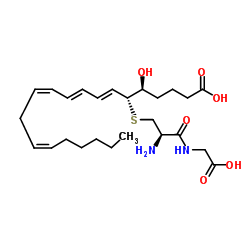| Structure | Name/CAS No. | Articles |
|---|---|---|
 |
Leukotriene D4
CAS:73836-78-9 |
|
 |
LY 171883
CAS:88107-10-2 |